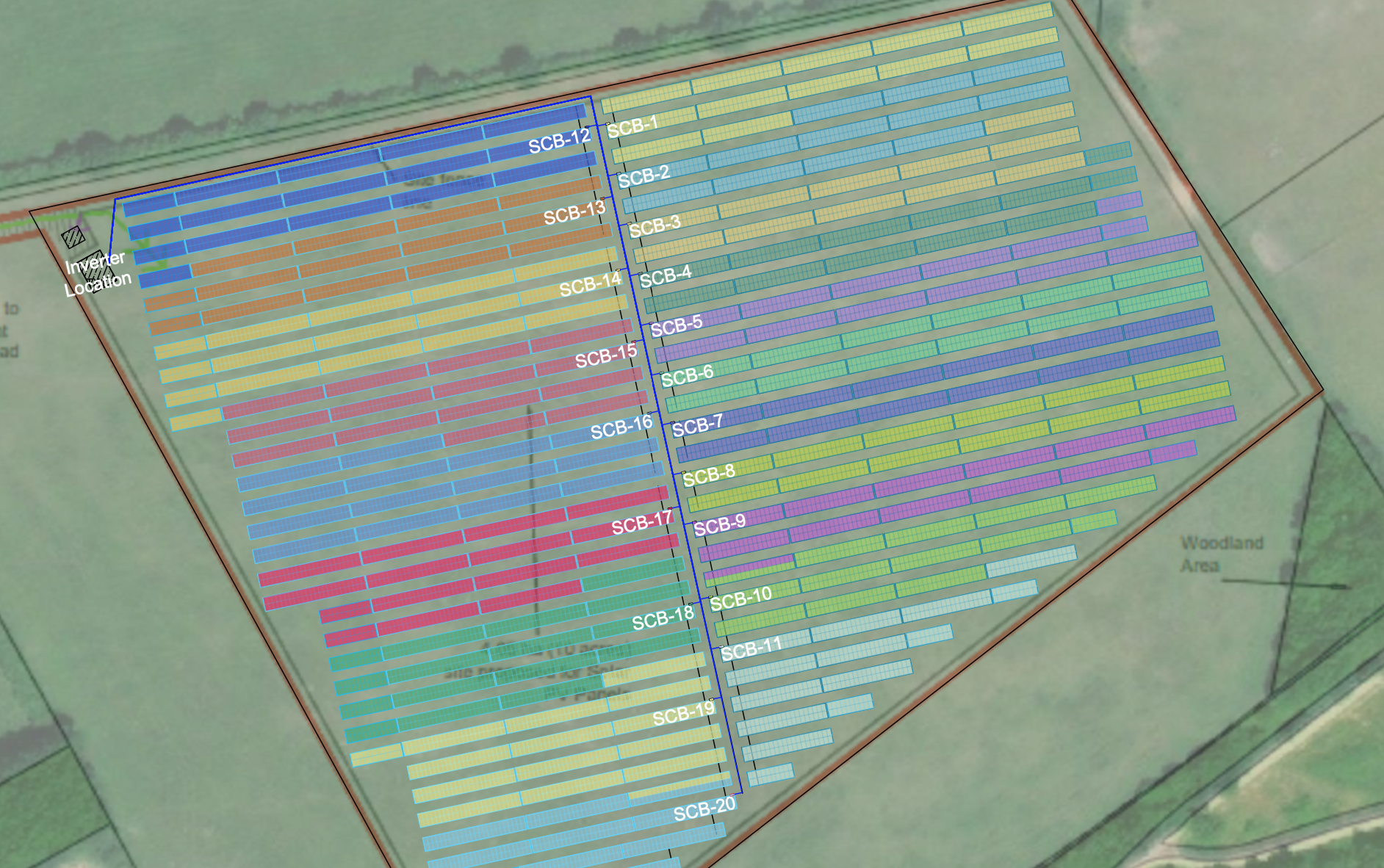
From coal mine to solar park
Whiteborough Solar Park
We’ve been working on our Whiteborough solar park project for over 3 years now.
We want to show that ground-mounted solar makes a lot of sense, if it is done right. At Whiteborough we are bringing together several key elements to make a unique solar park that showcases this approach:
Scale. Our solar park will cover approximately 10 acres. It’s not a huge installation that will change the landscape for miles around.
Land use. The land is a former opencast coal mine, which is currently used as pasture for horses. We’re not displacing farming or food.
Recycled solar. 45% of the solar panels are re-used from a decommissioned solar farm – we think this is a UK first.
Ethical sourcing. The remaining solar panels are ethically sourced with a supply chain free of forced labour.
Ethex Cuppa Club webinar
Watch the video update as the bond offer moved towards its maximum raise of £1.8 million, and learn why it was important for us to reach this target.
Whiteborough: the site
Whiteborough Farm dates back to at least the 1880s. The site is bounded to the south by the Silverhill Trail greenway, formerly the route of the Pleasley railway line which served the many collieries in the area.
Our solar field was the site of coal mining over many years. It was last worked as an opencast mine in the 1950s. The mine was closed and filled in in the 1960s. The land is now Grade 4 (Poor) Agricultural Land and is currently used for grazing horses.

An ecological survey showed that there are no protected species and few species of note at the site.
We aim to increase biodiversity at the site by:
- Establishing new native hedgerows along 3 sides of the site boundary.
- Planting new trees in the hedgerow.
- Enhancing the grassland biodiversity by sowing wildflower seed and managing the site accordingly with a mowing and grazing regime.
- Providing new nesting boxes for farmland birds such as tree sparrows.
- Providing access for mammals such as brown hare.
Recent research from the RSPB and Cambridge University shows that a well managed Solar PV ground mounted system can help to increase the mix of wildlife habitats available. As a result they can have up to 3 times the numbers of birds around them as nearby arable farmland
This holds out hope for the survival of Yellowhammer, Corn Bunting and many others.
Whiteborough: the design
Our solar array is designed to make best use of the available space and the grid connection.
We will build in two phases: an initial 2 MW of new Meyer Burger panels will be followed by a second phase of 1.5 MW of second-life LDK panels.
We’ve optimised the design based on the fact that our grid connection is limited to 2.05 MW export. At times of the highest solar input we will max out that capacity just from the new panels and the second-life panels will not be required. But at all other times (93% of the time) the second-life panels will be enabling us to put extra power down the line, contributing around 35% of the total energy we will generate in a year.
This strategy is known as a high DC:AC ratio and we have selected high-quality inverters that can support this approach, made by SMA in Germany.
There may be opportunities to further optimise our use of the grid connection in future, for example by using batteries.
We’ve not opted to include batteries at this time as they don’t offer a clear financial and carbon benefit right now – that may change in the future and we have access to additional land that could be used for battery co-location.
Funding the project
The funds to build the solar park have been raised from:
- Our rolling share offer: £800,000 of the overall cost of £2.6m has been sourced from shares
- The bond offer we carried out over summer 2025 in collaboration with Ethex which raised £1.8m
Key to our fund-raising was the support of Younity and We Have The Power, who provided loan guarantees of £1m and £800,000 respectively. We did not end up having to take up those loans, because the bond offer was so successful. However having the loan guarantees in place enabled us to sign the contracts to get work happening on site. The detailed due diligence work carried out by Younity also allowed Ethex to be comfortable in taking us on as a new client.
We’ve been awarded grant money by the GB Energy Community Energy Fund to carry out some of the work needed to put in place the second-life panels at the site.
Projected Timeline
| April 2024 | Project Rights acquired by Big Solar Co-op. Grid connection deposit paid. |
| September 2024 | Aniron appointed as principal installer. |
| April 2025 | Design finalised and key contracts agreed. Solar panel deposit paid. |
| May 2025 | Bridging loan guarantee terms agreed |
| June 2025 | Bond offer commences. Construction begins on site (civil and security works). |
| Summer 2025 | Solar preparatory works continue. |
| September 2025 | Bond offer concludes. |
| October 2025 | Solar panel installation commences |
| November 2025 | Grid connection work commences |
| January 2026 | Project energisation; first generation. |

